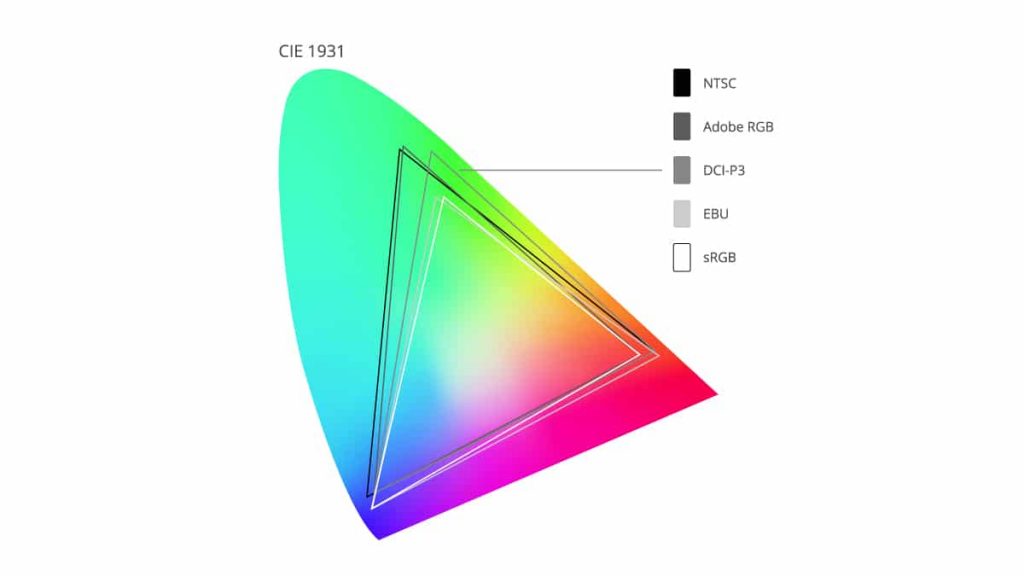One of the most important concepts to know when video editing and photo editing is often ignored. If you’ve found yourself asking ‘hey, what is color space?’ then you’re on the right track!
Before getting more in-depth describing what color space is, let’s start simple. In photography and videography, color space, also known as color gamut, describes the range of colors that can be captured by a camera or displayed by a monitor.
Understanding color gamut is an essential part of being a quality photo and/or video editor. In fact, color space is one of our most important specs to look for in a new monitor.
So let’s get to it. Here is what color space is for photography and videography.
The Basics – What is Color Gamut?
Color gamut refers to a range of colors that are either displayed, recorded or seen. In the image below, all of the colors you see are within the color gamut of your monitor.
Many of the colors pictured in this photo will appear on most modern monitors. However, there will undoubtedly be slight differences. This all depends on the range of colors (or color gamut) that your monitor is capable of displaying.
Fun fact: the term ‘gamut’ comes from music and was supposedly first used by a medieval monk Guido of Arezzo.
Here are the most common color spaces in use today, listed from widest (most colors) to narrowest (least colors):
- Adobe RGB
- NTSC
- DCI-P3
- EBU
- sRGB
The best monitors for video and photo editing typically have some coverage in sRGB and Adobe RGB. These are two extremely common color spaces for photographers and videographers to be working in.
To get a better understanding of how color spaces vary, check out the image below. In the image, you’ll see several triangles over a color spectrum. Each triangle represents one of the above color spaces. Within that triangle are all the colors that, for example, a monitor using that color space can display.

As you can see, the variations between each color space are slight and may not seem that important. But they can be. Especially if you are an editor who values having maximum control over how images look in the post-production process.
Let’s now get into how color space influences photography and videography.
Why Does Color Space Matter for Photography and Videography?
So, why does color gamut matter for photo and video editing?
Well, the easiest way to answer that question is with a thought experiment. Imagine you damaged your eye. And imagine that now you can see only 50% of the colors you used to see. Do you think the world would look more or less dynamic and interesting with less color vision?
No, probably not.

Color gamut matters in photo and video editing because it provides detail to images. Our eyes respond to contrast, and color (and light) provides that. Having a deep understanding of the tools you use in your process and what their color space capabilities are will help you achieve a more refined final product. This knowledge is essential, especially if you’ve committed to an upgraded color grading software.
This means you should be intentionally choosing which color space to shoot in at first. And it also means understanding how your monitor displays colors.
For example, a common question editors ask is ‘should I be using sRGB or Adobe RGB when editing?’ To answer that you need to first answer three questions:
- What color space was the footage or pictures shot in?
- What color gamut does my editing monitor display?
- Where will the final product be seen?
To learn more, check out my post that dives into the Adobe RGB vs sRGB decision. In it, I write about what each of these two color spaces is meant for and how to choose between the two when editing.
And, if you’re looking to upgrade gear for making better videos, this list of the best video editing monitors is the place to start.
